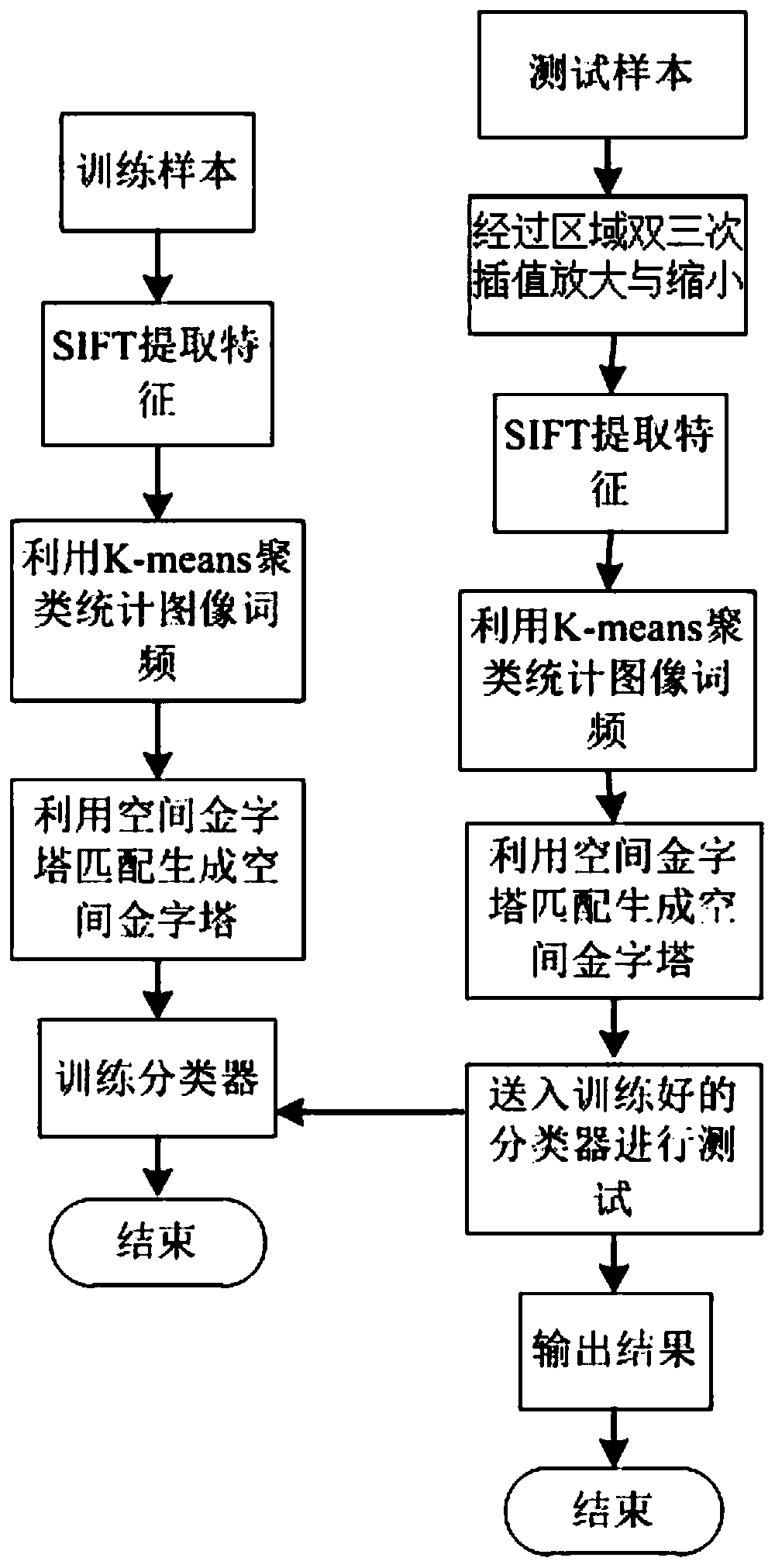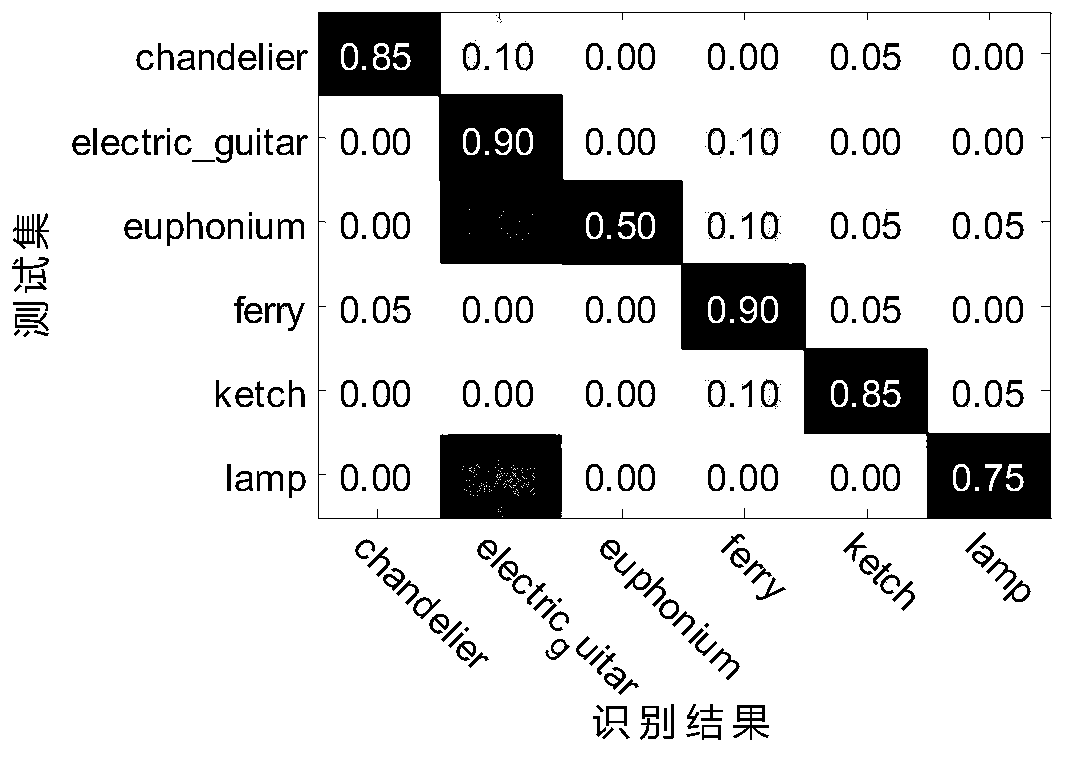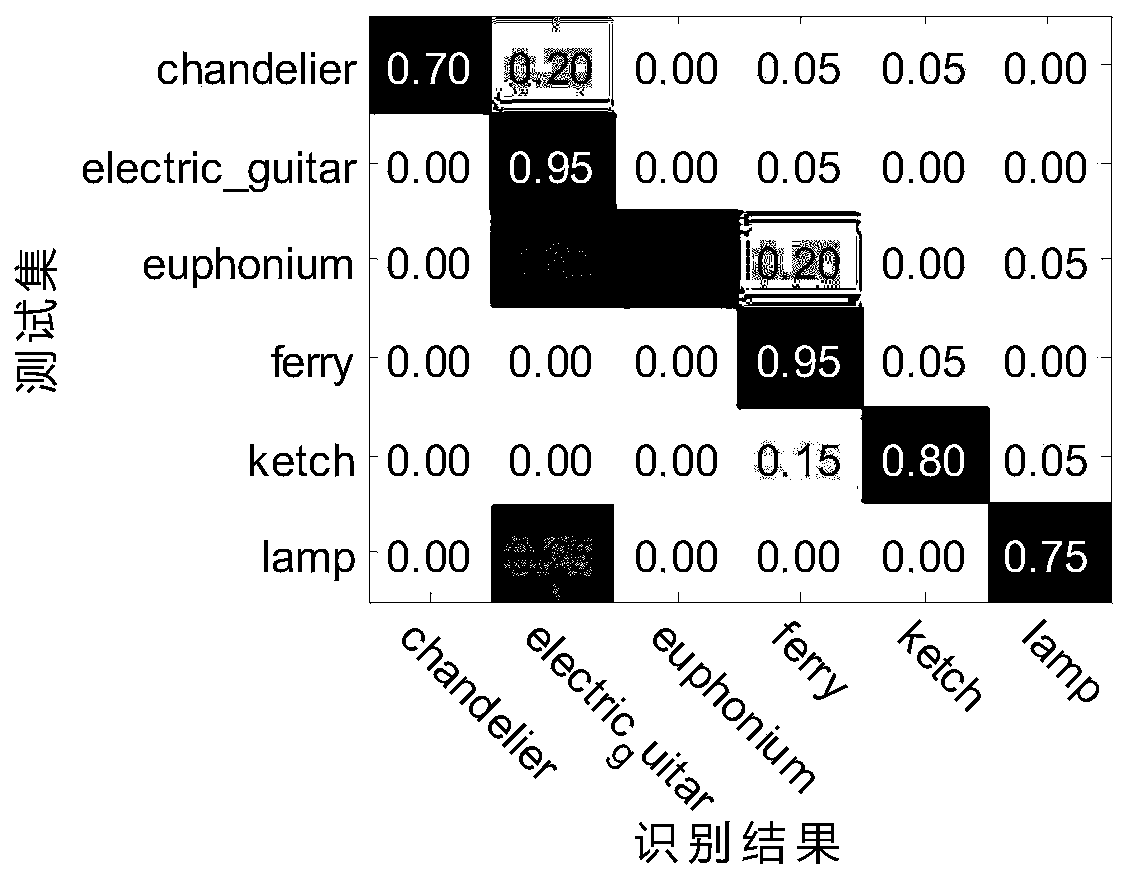Image classification and identification method based on regional bicubic interpolation technology
A bicubic interpolation, classification and recognition technology, applied in character and pattern recognition, instruments, computer parts and other directions, can solve the problems of image distortion and image classification recognition rate reduction, achieve distortion suppression, good classification and recognition effect, improve The effect of classification recognition accuracy
- Summary
- Abstract
- Description
- Claims
- Application Information
AI Technical Summary
Problems solved by technology
Method used
Image
Examples
specific Embodiment approach 1
[0014] A kind of image classification and recognition method based on area bicubic interpolation technology of this embodiment, such as figure 1 As shown, the method is realized through the following steps:
[0015] Step 1. After obtaining the training data through the steps of SIFT feature extraction, K-means clustering statistics word frequency and classification using the training samples, train the classifier model;
[0016] Step 2: Perform the same zoom-in and zoom-out changes on the test sample image through regional bicubic interpolation, and then perform retrieval and classification through the BOF algorithm;
[0017] Step 3: Send the test samples processed in Step 2 into the classifier model trained in Step 1 for classification and recognition.
[0018] From the classification results, it can be seen that the method of combining BOF algorithm and regional bicubic interpolation can improve the problem of reducing the recognition rate of image classification due to siz...
specific Embodiment approach 2
[0020] The difference from Embodiment 1 is that in this embodiment, an image classification and recognition method based on area bicubic interpolation technology,
[0021] After using the training samples to extract features through SIFT, K-means clustering to count word frequency, and classify the training data, the process of training the classifier model is as follows:
[0022] Step 11, use Gaussian blur to obtain scale space, (Gaussian convolution kernel is the only linear change kernel to realize scale change, which is a proven conclusion. Scale space is used to simulate the multi-scale characteristics of image data), use Gaussian The difference (Difference of Gaussian, DOG) pyramid represents that the scale space L(x, y, σ) of an image is defined as the difference between a Gaussian function G(x, y, σ) of varying scales and its original image I(x, y). The convolution between, as shown in formula (1):
[0023] L(x,y,σ)=G(x,y,σ)*I(x,y) (1)
[0024] in
[0025]
[002...
specific Embodiment approach 3
[0053] The difference from the specific embodiment 1 or 2 is that in this embodiment, an image classification and recognition method based on the area bicubic interpolation technology,
[0054] In the described step 2, first calculate the variance Var of the pixel values of the four neighborhood points of the corresponding point of the point to be interpolated in the source image, if the variance is less than the set threshold T (T is 20), then directly take these 4 pixels The mean value E of the value is used as the pixel value of the point to be interpolated; otherwise, it is still calculated by bicubic interpolation; the calculation formula of the variance Var is shown in formula (14):
[0055] Var=(E-f 11 ) 2 +(E-f 12 ) 2 +(E-f 21 ) 2 +(E-f 22 ) 2 (14)
[0056] Among them, f 11 , f 12 , f 21 , f 22 They are the pixel values of the 4 points in the neighborhood of the corresponding point of the source image at the current point to be interpolated; E is the a...
PUM
 Login to View More
Login to View More Abstract
Description
Claims
Application Information
 Login to View More
Login to View More - R&D
- Intellectual Property
- Life Sciences
- Materials
- Tech Scout
- Unparalleled Data Quality
- Higher Quality Content
- 60% Fewer Hallucinations
Browse by: Latest US Patents, China's latest patents, Technical Efficacy Thesaurus, Application Domain, Technology Topic, Popular Technical Reports.
© 2025 PatSnap. All rights reserved.Legal|Privacy policy|Modern Slavery Act Transparency Statement|Sitemap|About US| Contact US: help@patsnap.com



